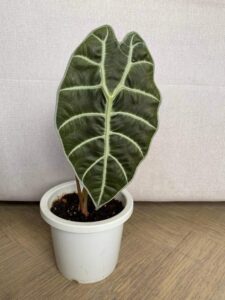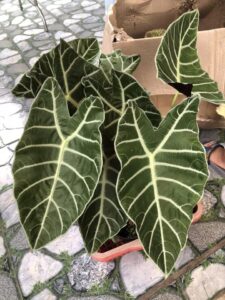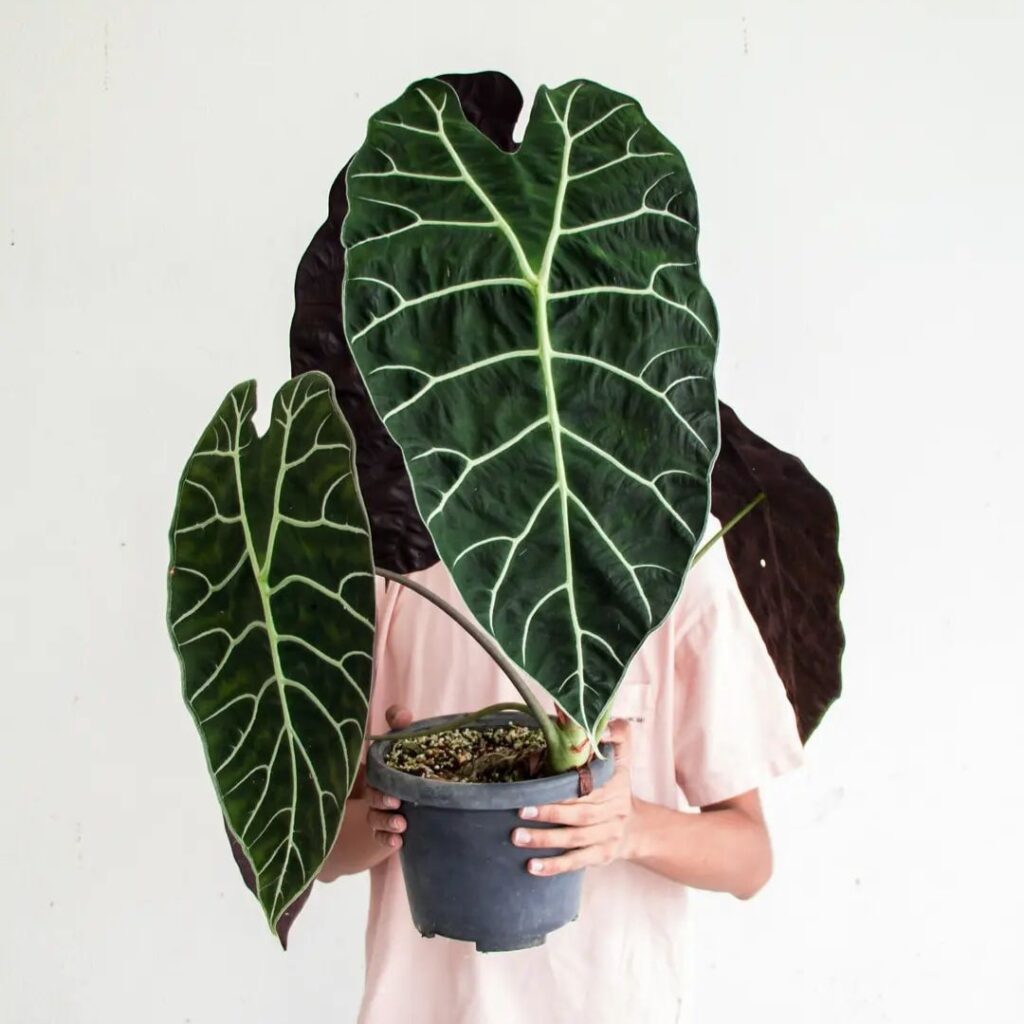Basic Information
Discover the world of Alocasia Watsoniana, an exotic beauty that brings the allure of tropical rainforests right into your home. This captivating plant is famous for its large, arrow-shaped leaves with striking veining. It thrives in warm and humid environments, making it perfect for indoor plant enthusiasts. To keep this stunning plant healthy, provide it with bright, indirect sunlight, maintain a warm temperature, and ensure high humidity. With proper care, you can create an ideal haven for your Alocasia Watsoniana to flourish.



Light
To ensure the healthy growth of your Alocasia Watsoniana plant, it should be placed in a bright area with indirect sunlight. East or north-facing windows are ideal spots as direct sunlight can harm its leaves. If the light is too intense, you can use sheer curtains to diffuse it. It is also recommended to rotate the plant periodically to promote even growth.
Water
Water your Alocasia plant when the top inch of soil is dry. Ensure good drainage and avoid root rot. In winter, water less frequently and use tepid water to prevent shocking the plant’s roots.
Soil
Use a well-draining, airy potting mix rich in organic matter. A mix containing peat, perlite, and pine bark is ideal. This combination supports moisture retention while preventing water-logging, crucial for healthy root development.
Temperature
Alocasia Watsoniana prefers a warm environment, ideally between 65-75°F. Protect it from cold drafts and sudden temperature changes, which can stress the plant.
Humidity
This plant loves high humidity, around 60% or higher. Increase humidity with a humidifier, misting, or placing it on a pebble tray. Avoid placing it near heating vents or air conditioners as these can dry out the air.
Fertilizer
Feed with a balanced liquid fertilizer every two weeks during the growing season (spring and summer), and reduce to monthly in winter. Over-fertilizing can harm the plant, so follow the recommended dosage.
Growth Rate
Alocasia Watsoniana has a moderate growth rate. It can reach a substantial size with proper care, making it a striking indoor plant. Its growth slows down in winter, which is normal.
Pet Safety
Alocasia plants are toxic to pets and humans if ingested, causing irritation of the mouth and digestive tract. Keep it out of reach of pets and children.
Grow in Semi-Hydro
- Alocasia plants excel in Semi-hydroponics (LECA/Pon) due to their natural inclination for root growth and humidity.
- Successfully transitioning Alocasia to Semi-hydroponics is enhanced with a Nutrient Stagnant Wicking (NSW) setup.
- Alocasia roots adapt seamlessly to the water in LECA/Pon, with quick resolution of any root hair issues in NSW setups.
- Fertilizer includes a nutrient mix concentration of approximately 800-1000ppm.
- These plants are versatile in different temperature and humidity settings, thriving in controlled environments.
- Long-term care involves maintaining a constant water reservoir and performing occasional system flushes for sustained growth.
Tips
- Rotate your Alocasia regularly to promote even growth.
- Adjust your watering schedule if leaves turn yellow, a sign of over or under-watering.
- Clean the leaves with a damp cloth to remove dust and enhance photosynthesis.
- Move the plant to a brighter location if it becomes leggy, indicating a need for more light.
- Be vigilant about pests like spider mites and treat them promptly if they appear.
- Use the ‘soak and dry’ method for watering: water thoroughly, then allow the soil to nearly dry out before the next watering.
- For pest control, consider using neem oil, an effective organic solution.
- Handle the roots gently during repotting, as they are pretty delicate.
In nurturing the Alocasia Watsoniana, you are not just growing a plant; you are cultivating a piece of the tropics. Due to its unique appearance and distinct care requirements, it is a rewarding challenge for any plant lover.
Happy planting! 🌱


